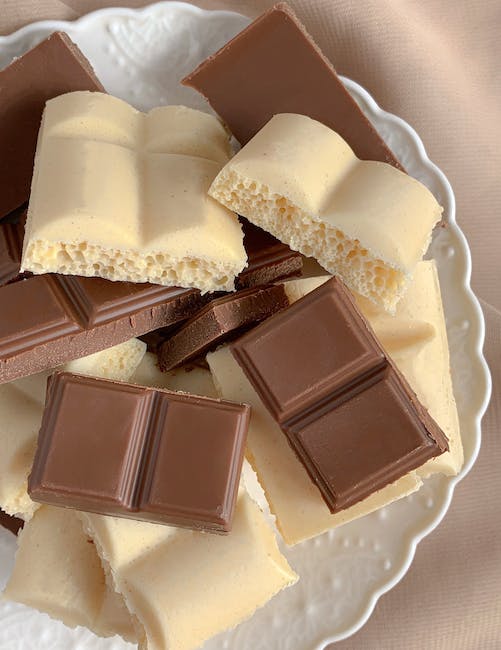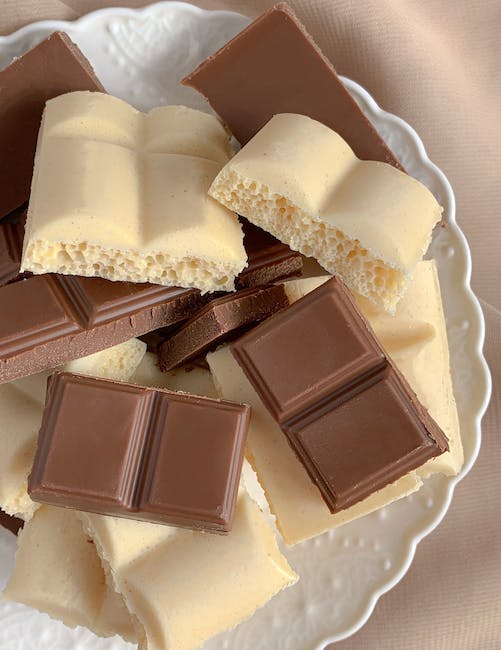
Chocolate is a delicious treat loved by many people around the world. There are various types of chocolates available, each with its own unique characteristics and production methods. Here are some of the most common types of chocolates:
- Dark Chocolate: Dark chocolate is made from cocoa beans, sugar, and cocoa butter, with little to no milk added. It has a higher cocoa content and a more intense flavor compared to other types of chocolate. The process involves roasting and grinding the cocoa beans to produce cocoa liquor, which is then mixed with sugar and cocoa butter.
- Milk Chocolate: Milk chocolate is made by adding milk powder or condensed milk to the cocoa liquor, along with sugar and cocoa butter. It has a milder flavor and a creamy texture due to the added milk components.
- White Chocolate: Despite its name, white chocolate does not contain cocoa solids. It is made from cocoa butter, sugar, and milk solids. The cocoa butter gives it a rich, buttery taste and a smooth texture.
- Bittersweet Chocolate: Bittersweet chocolate is similar to dark chocolate but has a higher percentage of cocoa and less sugar. It has a more pronounced and slightly bitter taste.
- Semisweet Chocolate: Semisweet chocolate is also similar to dark chocolate but contains a higher sugar content. It has a slightly sweeter flavor and is often used in baking.
The process of making chocolate involves several steps:
- Harvesting: Chocolate production begins with the harvesting of ripe cocoa pods, usually by hand. The pods are carefully opened to extract the cocoa beans.
- Fermentation: The extracted cocoa beans are then fermented to remove the pulp and develop the chocolate flavor. They are placed in large containers and left to ferment for several days.
- Drying: After fermentation, the cocoa beans are spread out and dried either in the sun or using artificial methods. This step reduces the moisture content and prepares the beans for further processing.
- Roasting: The dried cocoa beans are roasted to bring out the flavors and aromas. The roasting temperature and duration can vary depending on the desired chocolate type.
- Grinding: The roasted cocoa beans are ground into a paste called cocoa liquor or chocolate liquor. This paste contains both cocoa solids and cocoa butter.
- Conching: The chocolate liquor is then refined through a process called conching. Conching involves grinding the chocolate for several hours or even days to smooth out the texture and enhance the flavor.
- Tempering: Tempering is a critical step in chocolate making that involves carefully heating and cooling the chocolate to stabilize the cocoa butter crystals. This process gives the chocolate a shiny appearance and a smooth, snap-like texture when it hardens.
- Molding: Finally, the tempered chocolate is poured into molds and allowed to cool and solidify. Once hardened, the chocolate can be removed from the molds and packaged for consumption.
It’s important to note that different manufacturers may have variations in their chocolate-making processes, but these steps provide a general overview of how chocolate is produced.

